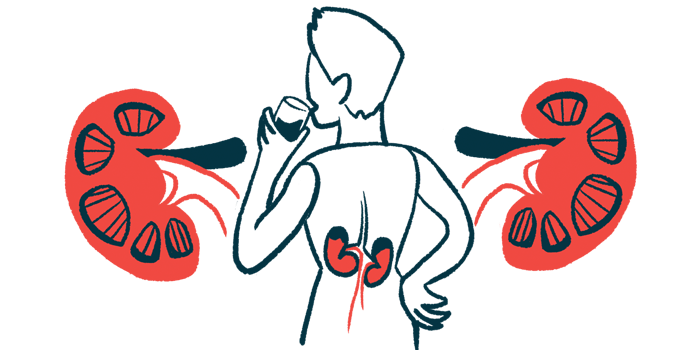Fabry test using kidney cells could replace biopsy, study shows
Analyzing cells from urine could help with diagnosis, monitoring

Analyses of kidney cells collected from urine samples could offer new ways of diagnosing Fabry disease and monitoring responses to treatment, a study showed.
Human urine-derived renal epithelial cells (hURECs) collected from a man with Fabry showed signs of kidney damage similar to the disease hallmarks that are seen with a more invasive kidney biopsy, the researchers said.
Gene activity analyses of the cells revealed alterations that were partially normalized with treatment, offering a way to monitor therapeutic responses.
“hURECs are a valuable non-invasive tool to [diagnose] and monitor the treatment of Fabry disease, and implementing this into clinical use should be a priority,” researchers wrote.
The study, “Urine-derived renal epithelial cells for deep phenotyping and transcriptomic response to therapy in Fabry disease,” was published in Clinical Science. It was funded by Sanofi, which markets the Fabry treatment Fabrazyme (agalsidase beta).
Biopsy is reliable, but invasive, diagnostic tool
Fabry disease is an inherited disorder wherein a fatty substance called globotriaosylceramide (Gb3) accumulates in the body’s tissues and causes damage. Kidney problems are common, and can eventually lead to kidney failure.
The most reliable method for diagnosing kidney involvement in people with Fabry is a kidney biopsy, where a sample of kidney tissue is collected for analysis under a microscope, but this is an invasive procedure. Other urine and blood biomarkers may not detect kidney disease until it is in later, irreversible stages.
hURECs originate in the kidneys and are excreted in urine. A possible approach to monitoring kidney function in Fabry is to collect these cells and analyze them for alterations suggestive of kidney harm, according to the researchers.
“As urine samples are readily available and non-invasive, hURECs have the potential to provide a large population of cells for downstream analysis of disease phenotypes [characteristics], pathophysiological mechanisms, and response to therapies,” they wrote.
The scientists analyzed hURECs from a man recently diagnosed with Fabry disease after he came to the clinic with severe abdominal pain.
Blood and urine tests gave evidence of kidney damage, and a kidney biopsy confirmed standard signs of Fabry-related kidney disease. Genetic testing confirmed a Fabry diagnosis.
Urine samples were collected to obtain and analyze hURECs. The cells showed characteristic features of Fabry-related kidney damage under a microscope, consistent with the biopsy findings.
That suggests that noninvasive hUREC analyses “could be a useful diagnostic tool in place of a kidney biopsy,” the researchers wrote.
Gene activity analyses revealed that hundreds of genes were altered in the man’s kidney cells relative to cells collected from people without Fabry disease (a control group).
The ones that showed the most substantially increased activity were related to fat transport and inflammation. Those that were most substantially decreased tended to often be related to the extracellular matrix (ECM), the protein network that gives cells support.
Further analyses overall revealed dysregulation of processes known to be involved in Fabry kidney disease, including fat maintenance, cellular stress responses, and ECM organization.
The man was started on the oral chaperone therapy Galafold (migalastat). His kidney function still declined, so he was switched to enzyme replacement therapy (ERT) a little over a year after his diagnosis. However, kidney function appeared to continue declining.
New urine samples were collected, and follow-up assessments revealed an “appreciable reduction” in signs of Fabry-related kidney damage in the hURECs after treatment began, according to the authors.
After four to five months on Galafold, there was a shift in the gene activity profile of the hURECs, where many genes that had altered activity before treatment started moving in a more normal direction.
However, after nine months, the profile returned to a pre-treatment state, which the researchers said suggested “diminishing effects over time.” A couple of months after the switch to ERT, gene activity started to again move in a more normal direction.
“These findings suggest that although the chaperone therapy provided an initial transient benefit, ERT may offer a more consistent and sustained amelioration of the disease-associated pathways in the kidney,” the researchers wrote.
The researchers also developed a scoring system to compare the overall gene activity profile of a Fabry patient’s hURECs to that of healthy people.
“We anticipate that, following further validation with additional Fabry nephropathy [kidney disease] patients, this scoring approach could serve as a real-time indicator of therapeutic success in future clinical studies of Fabry nephropathy patients,” the scientists wrote.







